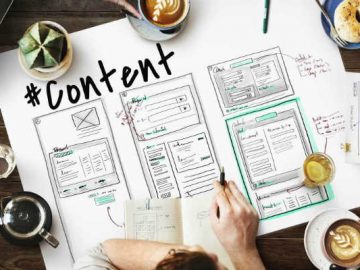There are many aspects of web design that relate to how user-friendly the site is going to be in terms of navigation and visitors being able to easily access all areas of the website easily. Whilst it is important to get this right, it is not the only major consideration you should factor into your website design.
Another very important matter of website design to think about carefully, is the visual impact of your site and in particular, those elements which will directly influence how a visitor uses their eyes to scan, read or view your website content on their screen. There are four main ones you should consider when designing your site, which are:
- Text Arrangement
- Colours
- Reading Behaviour
- Fonts
Text arrangement refers to how your text is arranged on the page and more especially on content pages which have a lot of text. One of the best practices is to utilise a grid system similar to how most newspapers arrange their newsprint text on their pages. The reason this is particularly relevant today is the huge upturn in handheld and mobile devices that people now use to access the internet.
Your text obviously doesn’t have to look exactly like a newspaper but it should be arranged in conjunction with other elements on the page based on a grid structure. If you discuss this with your web designer they can recommend grid templates that can be used, with two of the more popular ones being ‘Simple Grid’, and ‘960.gs‘.
Colours obviously play a big part in your web design but they should not be used randomly or without any thought. Firstly, the colour scheme should try to be conducive with your industry so luminous yellows and garish pinks are not advised for a financial services website.
The other main principle is not to use too many colours. Visitors feel more comfortable browsing a site if it has consistency, plus it can be distracting for them if every page has different colours.
Reading behaviour refers to the pattern our eyes follow when we are scanning a website page. Most people when they are reading the text in a book or a document move their eyes from the top of the page downwards and then left to right on each line. However, research has shown that on websites people tend to scan rather than read each line, and the pattern their eyes follow is more akin to either the letter ‘Z’ or ‘F’.
It is important to take this into account when deciding the layout of each page of your website so that anything which you especially want to be read or seen by visitors is located accordingly.
Finally, we have fonts, of which there are hundreds to choose from. Like colours, you should be consistent with the fonts used through your site and only use one or two. You should be aware that certain fonts are suitable for headlines and others more suitable for smaller text. Your designer will be able to advise you which fonts are best for the sort of website you are building.




